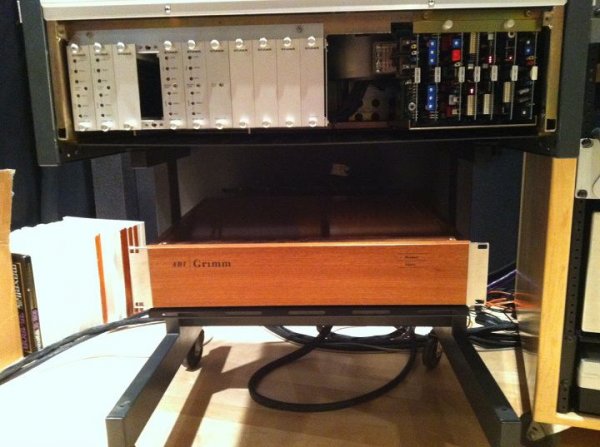Sigh. The ESS video mentioned in the article has been put up in this forum a few times by jkeny but each and every time, it was either ignored or dismissed. Most complained they don't have the time to wade through. When the exact time in the video was posted, the thread suddenly went dead. One member even went as far as to say why would he trust the data of a man/company who/which is pushing the superiority of its own product. I guess nobody likes to be told they might be wrong.
It is all not simple of course, and only to some extend we are able to grasp real merits - but it may be better to say we don't understand anything of it anyway and next give up. Btw, I think that time in the video would be ~38 minutes into it.
So, thread dead again ?
IMHO, not a lot of people are interested in looking for answers, just cherry picking whatever data/information to champion whatever format they are vested in. [...]
I think you nicely summarized what I said in that other post in a more complicated way. But remember my half-way conclusion in there which went something like "since we can't get hold of the technical merits we have to listen and compare - and that is impossible because ..." and then your story.
Bruce says the phasure is nothing special (i don't know because I've never heard it) but did he let it performs at its best?
Allow me : Spot on. Also the very reason for that other post and I tried to squeeze in something like you say here, but found it too explicit. But to summarize this, two main topics :
1. NOS is still to be filtered;
2. When done the common-means way it can be regarded an OS DAC.
... which stupidly enough indeed leads to XXHighEnd only (I can't help that) because of its dedicated filtering for this (which btw is named Arc Prediction). Add to this that only through XXHighEnd the "old version" of the NOS1 can do 24/384 (otherwise it's 24/192) and just know how much this matters (which is why the NOS1-USB does 24/768 because again it vastly matters).
And now I must be careful that this is not about me or my products, but were it about the formats and how to judge them, it IS important.
That article is nice, although it seems to deviate from all subjects started while it began so nice about how SMDs sound all the same and different from PCM (R2R) converters. Anyway, including diving into some of the links in there and looking at that YouTube, this is what we should get from it :
- With SDM you listen to an algorithm;
- With SDM you listen to what any (software) engineer could make out of it and this is different for all engineers (manufacturers);
and my additions :
- Since all sound different none will be good (though subjectively we may like it);
- With PCM and any common-means filtering we again listen to an algorithm and again we listen to what one could think of. But :
- Today we can do this ourselves to a large degree, like e.g. iZotope provides quite some options.
and again but :
- Only with a DAC which doesn't do a thing herself this can be fully utilized. We name them NOS/Filterless.
Btw before it is misunderstood or not thought about : Any next upsampling step needs 1 additional bit. So if Redbook is the base, 2x needs 17 bits, 4x needs 18 bits, 8x needs 19 bits - and so on. And of course this sadly means that a TDA154x can not be used (oh it can, but the result will be sub-optimal and less).
Peter











